|
ROUND THE POLE FLYING
After the very enjoyable evening of the March Club Night and the demo by Trevor and Roger of the Club’s RTP, Bill Glover got in touch with a trove of his models from his time as Comp Sec of Woking MFC. So as to build on the interest shown on the night, Here’s a Sloping Off Special - just one page - it won’t take long to read! All photos and notes on the models are by Bill.
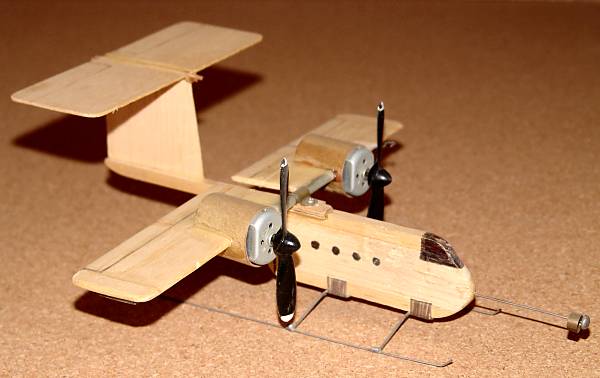
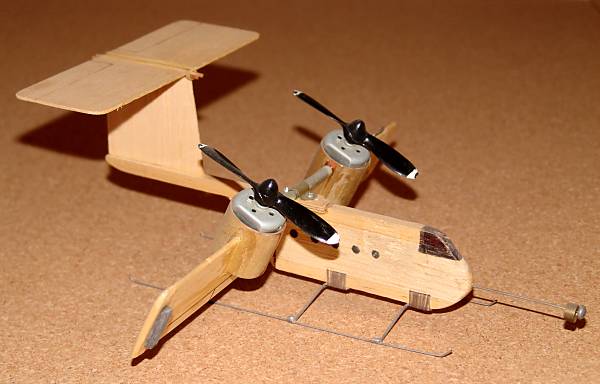
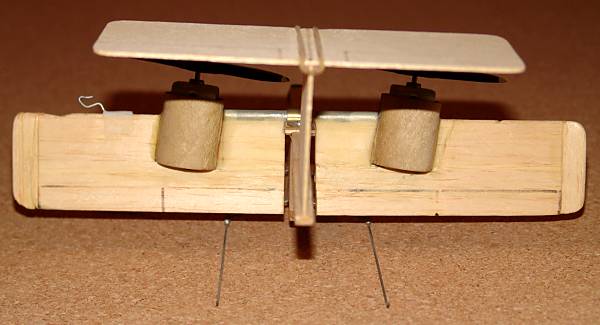
1-3 are the Tilt Wing model, built to win the fast/slow element of the RTP competition. With the wing flat it flew like a bat out of hell, and with it at around 80 deg it flew at a slow walking pace. Large amounts of sidethrust and some tip weight were required to keep tension on the lines at low speeds. It was also prone to tipping back on takeoff which made it stop dead - hence changing to a 'skid' undercarriage which prevented this. It balanced on the wing leading edge (an aluminium tube, with the power cables inside) so there was no CG shift when the wing tilted ... there was a brass collet on a nose boom for fine tuning the CG. Like many of my models it used 1/64 ply strip wrapped around a motor a couple of times to form a laminated push-fit motor mount that then became part of the structure.
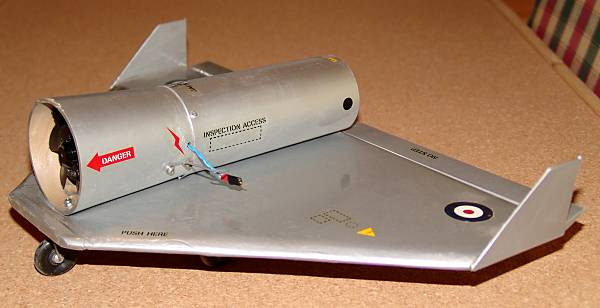
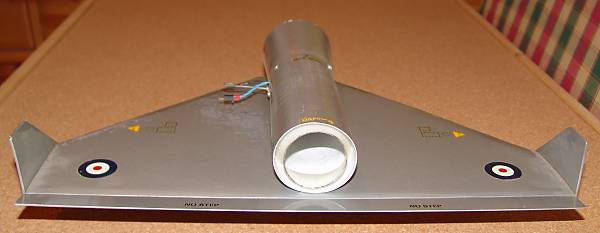
4 and 5 are an EDF foamie! I took an old hairdryer apart and found a normal brushed motor inside. I cut the body of the hairdryer down to a basic duct then added a tailpipe with a flow restrictor at the back, cut from a plastic bottle. This increased the static thrust significantly. The wing was flat polystyrene foam covered with solarfilm, balsa fins and elevator (hinged with copper wire and positioned in the exhaust to improve effectiveness at low speeds). Like most deltas this would fly slowly at high AoA, but with the elevator neutral and the highest voltage on our transformer unit (46V?) it was a complete beast. It had a tricycle landing gear and after landing took several full laps to slow to a stop. The tether was bolted to the duct for safety but the pole rocked from side to side in an alarming manner and people tended to hide behind tables when I flew it!
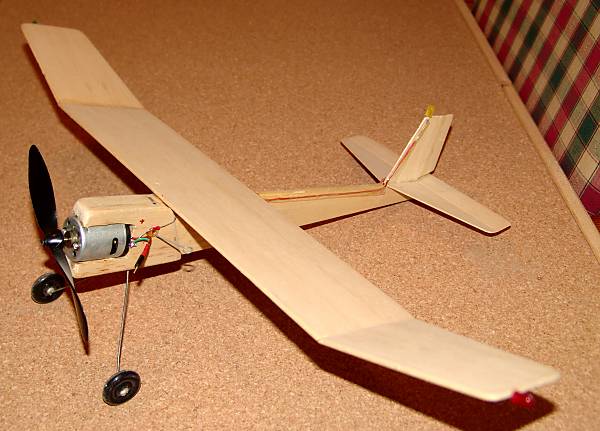
6 is a basic model I made for a large brushed motor ... this had LED lights but of course they went out when you cut the throttle! Nevertheless it was fun to fly in the dark.
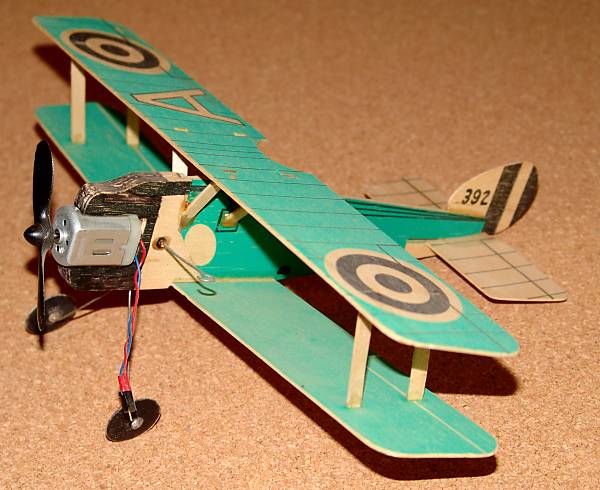
7 is a Ballards Sopwith Camel. The tailplane sat in a curved slot and could be slid fore/aft to increase/decrease the camber, giving a wide range of elevator control. A very nice flying model (they also did an Albatross - I think these may still be available from the RTP Hut). It was the only model that could loop in the British Legion hall we used.
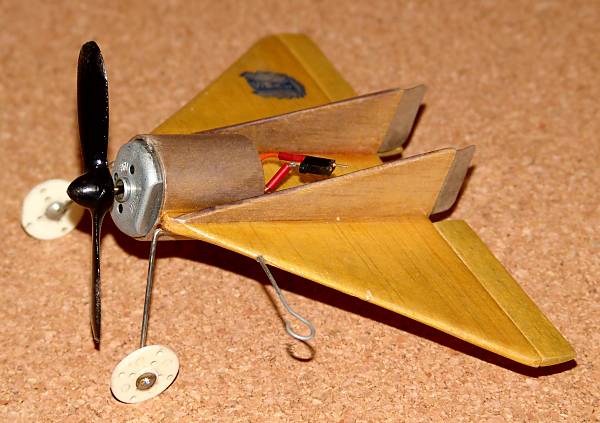
8 was my main competition model - it was pretty much invincible! Balsa wing with a rolled ply motor mount, the wheels were servo disks and the 'outer' one was fixed to ensure it maintained line tension on the ground (some of the competition events required a landing/stop/takeoff in the middle). The wheels protected the prop so touch & gos could be done at high speed without any risk. Tinplate rudders and copper wire hinged elevons (which in fact were never moved). This model was built around a standard (cheap) Ballards motor that was mandatory for all events where power & speed were important.
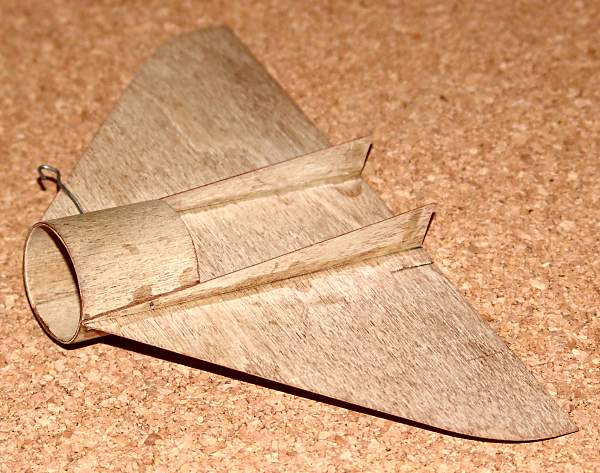
9 was a pure speed version from very thin ply.
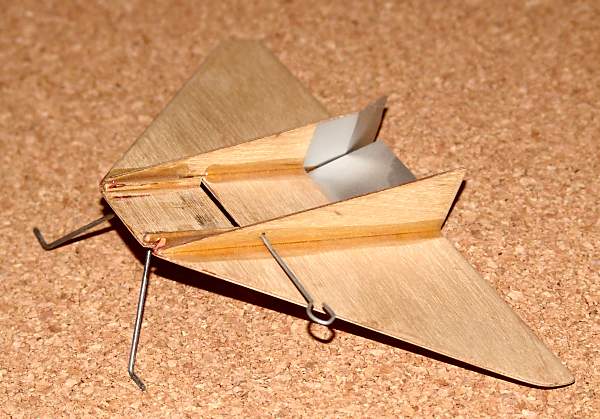
10 was a combat version (we had a dual pole), all ply again but with the motor rubber-banded on and a lithoplate elevator protected between the fins. This was essentially indestructible.
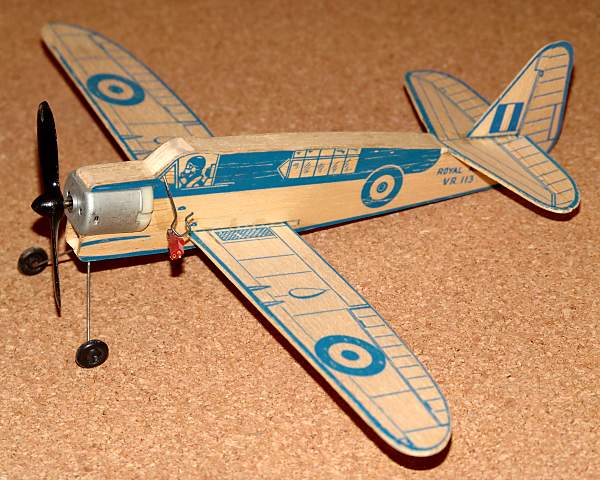
11 was a Veron 'Quicky' series Fairey Firefly, intended for rubber power.
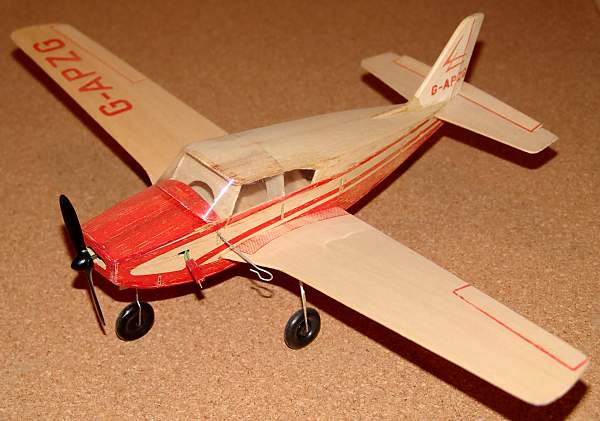
12 was a KeilKraft EeZeBuilt Piper Comanche, again intended for rubber power. This flew very nicely and looked good in the air.
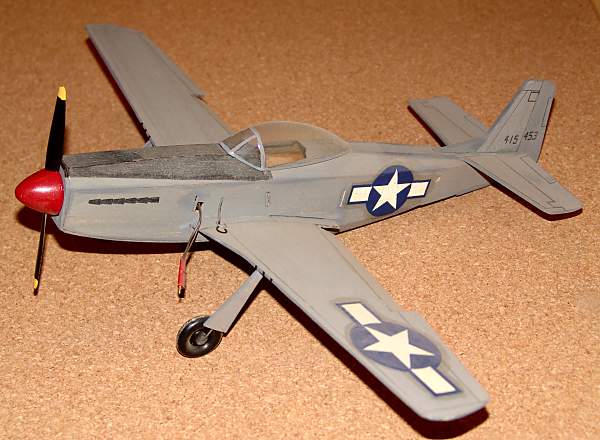
13 was a KeilKraft EeZeBuilt P-51. This flew very realistically with the flaps down ... home made balsa spinner.
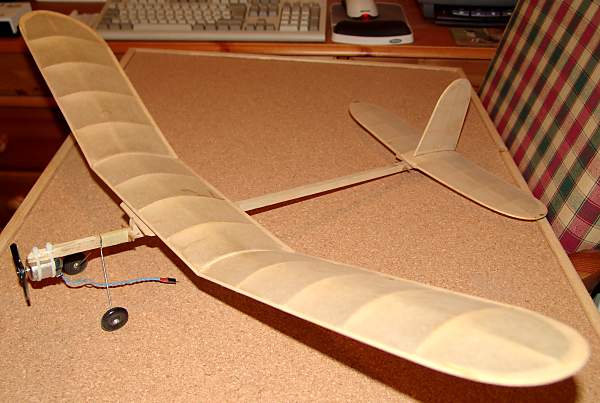
14 was built for a 'slow flight' competition which involved doing 10 laps in the longest time. This used tissue covered KeilKraft Ajax flying surfaces (undercambered wing) on a lightweight balsa stick fus. and used the smallest and lightest motor I could find ... an aluminium can one from an old servo. Intended for 5V this produced way too much power with the hand controller on its lowest setting so I made a deliberately inefficient prop from a strip of tinplate soldered to a small brass collet and twisted the blades till it gave a comfortable amount of thrust. This model was trimmed & balanced to fly 'properly' and would glide gently down the hall from a hand launch. For RTP it was trimmed to circle and flew very slowly with the lines quite slack.
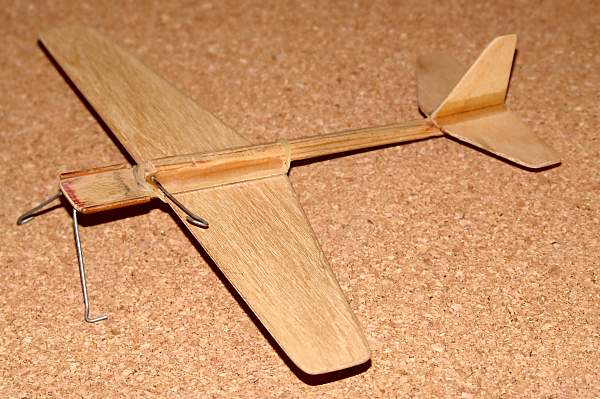
15 was another all ply combat model with a banded-on wing and motor.
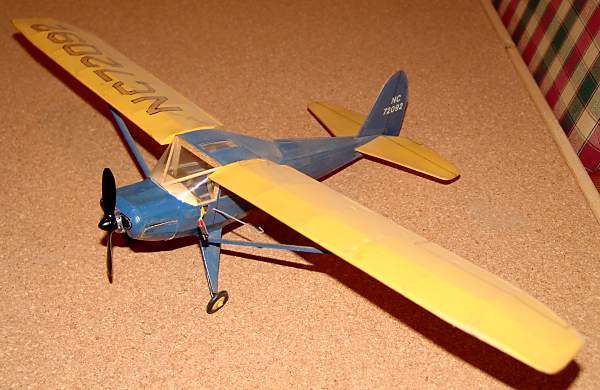
Finally 16 was a KeilKraft Luscombe Silvaire (tissue covered), originally free flight with a Telco CO2 motor. For RTP it flew (very nicely) using a small servo motor with cooling holes drilled through the aluminium can.
Competition events I can remember offhand were ...
Scale
Touch & gos - in a zone marked out with masking tape on the floor
Spot landing - strip of tape as the 'spot'
Pylon racing - as many laps as possible in a set time, including a 'pitstop' (come to a halt on the floor then go again) at some point
Under & over - two lightly constructed bars on opposite sides of the circle .. as many passes over one and under the other on the same lap (without touching the floor) in a set time
Slowest flight - 10 airborne laps in the longest time (without touching the floor)
Fast & slow - 10 slow airborne laps, 10 fast airborne laps, score was slow time minus fast time. Nothing to be added or removed between the flights but trim / incidences / etc. could be adjusted¬
Combat - thin paper streamers, 1 point per cut. A demolition derby with 'normal' models! Lots of line tangles.
I was the competition secretary for many years. The club met every Friday night once BST finished and RTP was a default activity when there wasn't another event scheduled. The competitions were held on specified dates of course.
I flew my Mini IFO successfully inside the hall but it was way too small for normal indoor r/c. The club hired a school sports hall every week for that in later years, eventually using this to run the funds down to zero after the decision to wind the club up.
|